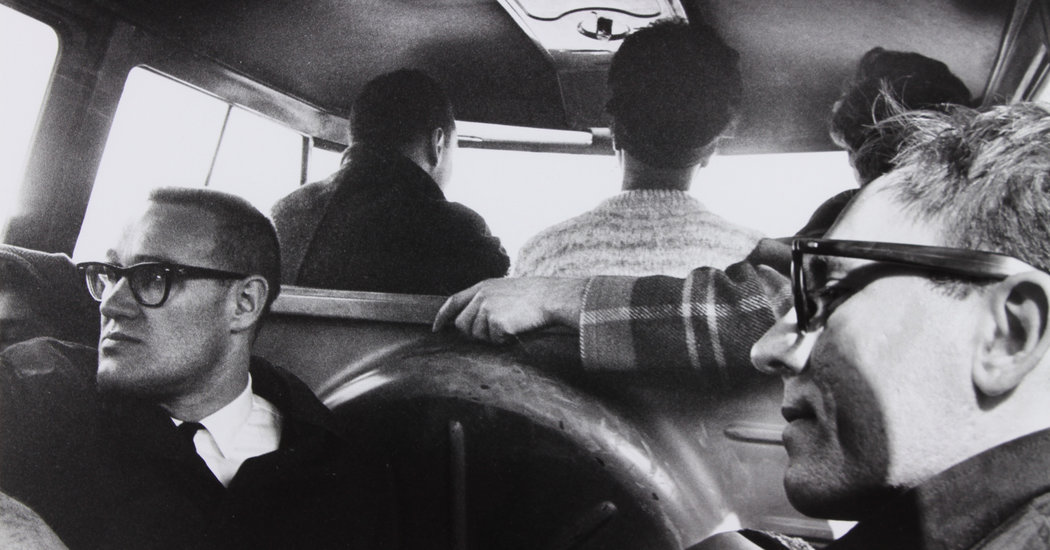very muddy jungle gym.” That’s how photographer Felipe Jácome describes the soaring mangrove trees in Cayapas Mataje Mangrove Reserve in northwestern Ecuador. Their roots, twisted and gnarly and towering, are the fantasy of any child who grew up climbing trees, playing house in their roots and swinging from their branches.
Category: Portfolios & Galleries
-
Growing Up in Ecuador’s Mystical Mangroves | PROOF
-
Fukushima, no go zone : Carlos Ayesta & Guillaume Bression – The Eye of Photography
The more than 80,000 residents who evacuated the areas surrounding the Fukushima nuclear plant have all felt the temptation to return to their homes, schools or businesss. And they have all struggled to recognize these familiar places turned hostile. The years of absence, the rodents, and the effects of the earthquake and tsunami of March 11th have left their mark.
-
When Your Backyard Is ‘Big Heaven,’ Love of Wildlife Is Second Nature | PROOF
Ibex. Chamois. Ermine. Grouse. Red foxes. As a teen, Stefano Unterthiner spent countless hours observing these animals in Gran Paradiso National Park, an hour or so drive from his home in Italy. His uncle Paolo, a passionate nature lover and photography buff, would take hikes with his best friend, Luciano, a park ranger, and invite Stefano along. Together they explored the forests and valleys of this pristine piece of the Italian Alps, looking for wild animals to photograph.
-
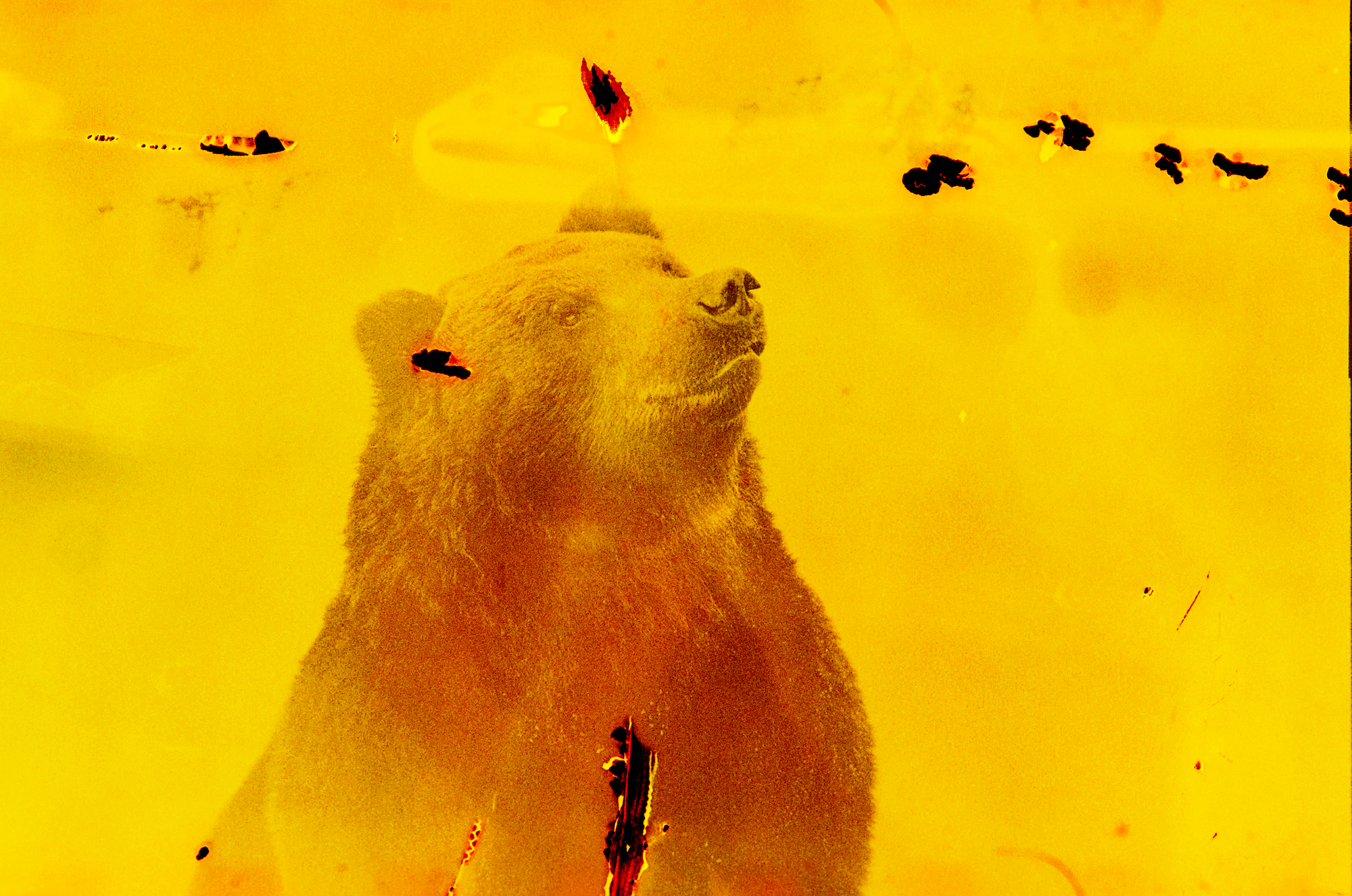
Bela Doka – Fan Club Putin | LensCulture
LensCulture – Contemporary Photography
Discover and share the best in contemporary photography
via LensCulture: https://www.lensculture.com/articles/bela-doka-fc-putin
They spend hours chatting on the internet about their hero and even go to university wearing Putin T-shirts. I was really shocked at how they could feel such intense love for him.
-

A Lost Soviet Tribe, Scattered by Stalin’s Whim — Vantage — Medium
A Lost Soviet Tribe, Scattered by Stalin’s Whim
After 70 years, a Georgian Muslim minority has yet to return from forced deportation.
via Medium: https://medium.com/vantage/a-lost-soviet-tribe-scattered-by-stalin-s-whim-ad169fb83360
After 70 years, a Georgian Muslim minority has yet to return from forced deportation
-
Duane Michals : The Unknown Portraits – The Eye of Photography
Duane Michals’s poetic body of work, celebrated for its existential series, is filled with portraits shot both on commission and as part of his personal exploration of the genre. However, they represent only a small part of his oeuvre, appearing here and there in books and magazines. The current exhibition at the DC Moore Gallery in New York is taking a look back at this less obvious facet of the American’s work through a large selection of photographs depicting famous people and the photographer’s friends and family. The mostly black-and-white images are developed from negatives unearthed from Michals’ archives. Many of them are being exhibited here for the first time.
-
Ilan Godfrey: Legacy of the Mine « The Leica Camera
Born in Johannesburg in 1980, Ilan Godfrey is a South African photographer who devoted himself to an extensive photographic project on the mine, which is central to understand present-day South Africa and its history. This in-depth work gave birth to a book in 2013, “Legacy of the Mine“, where he especially questioned the entangled and dramatic consequences and impacts this larger economic machine has on the lives of people and communities and on the land. In the course of the interview, Ilan discusses how his approach evolved while working on the ground in close contact with communities and activists and gives insights of his collaborative working process.
-
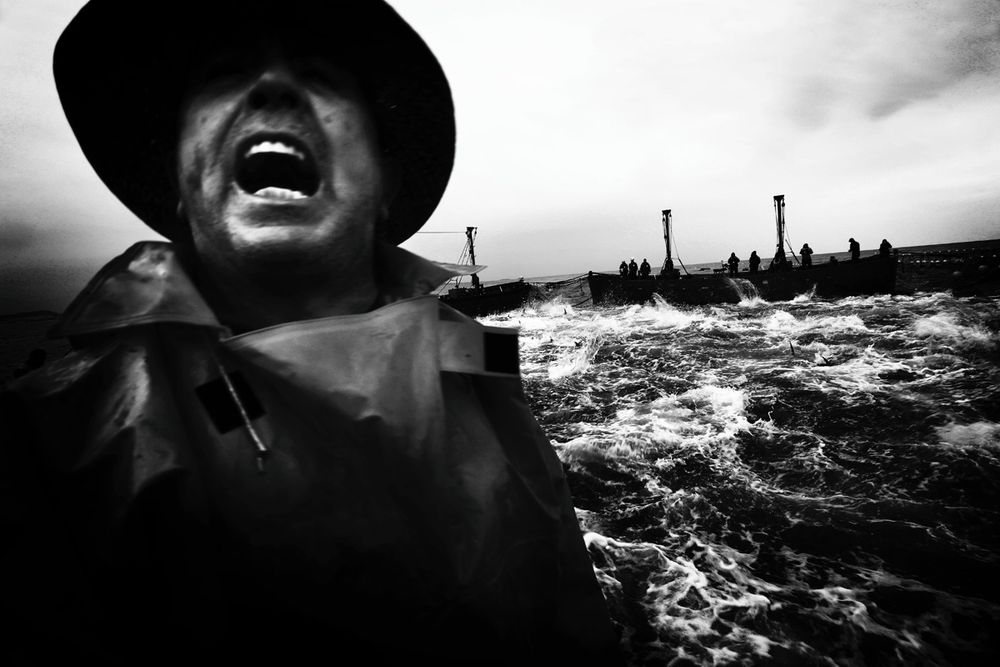
Antonio Gonzalez Caro – Garum | LensCulture
Garum – Photographs and text by Antonio Gonzalez Caro | LensCulture
Every springtime, off the coast of southern Spain, fishermen gather to catch the bluefin tuna—the fiercest and most dangerous variety—using the ancient practice of “Almadraba
via LensCulture: https://www.lensculture.com/articles/antonio-gonzalez-caro-garum
“Almadraba” is the name given to a type of ancient fishing art that has existed since Phoenician times. Off the southern Spanish coast, in the springtime, the arrival of the migrating bluefin tuna is eagerly awaited. The bluefin tuna is the wildest, fiercest variety, with the largest specimens approaching 500 kg (~1,000 lbs.). This project shows fishing in Conil, Cadiz, during the 2013 fishing season.
-
Juxtapoz Magazine – Selektor Issue III: Missy Prince
Juxtapoz Magazine – Selektor Issue III: Missy Prince
[Prince] takes the tradition of the American road trip down by a semi-tone and invents an everyday road trip. Not an ego trip, not a drive-through per…
Link: https://www.juxtapoz.com/photography/selektor-issue-iii-missy-prince/
In their third publication, French publisher Selektor features Portland-based American artist Missy Prince. The images, all shot on an Olympus XA compact film camera, document America as seen from Prince’s car
-
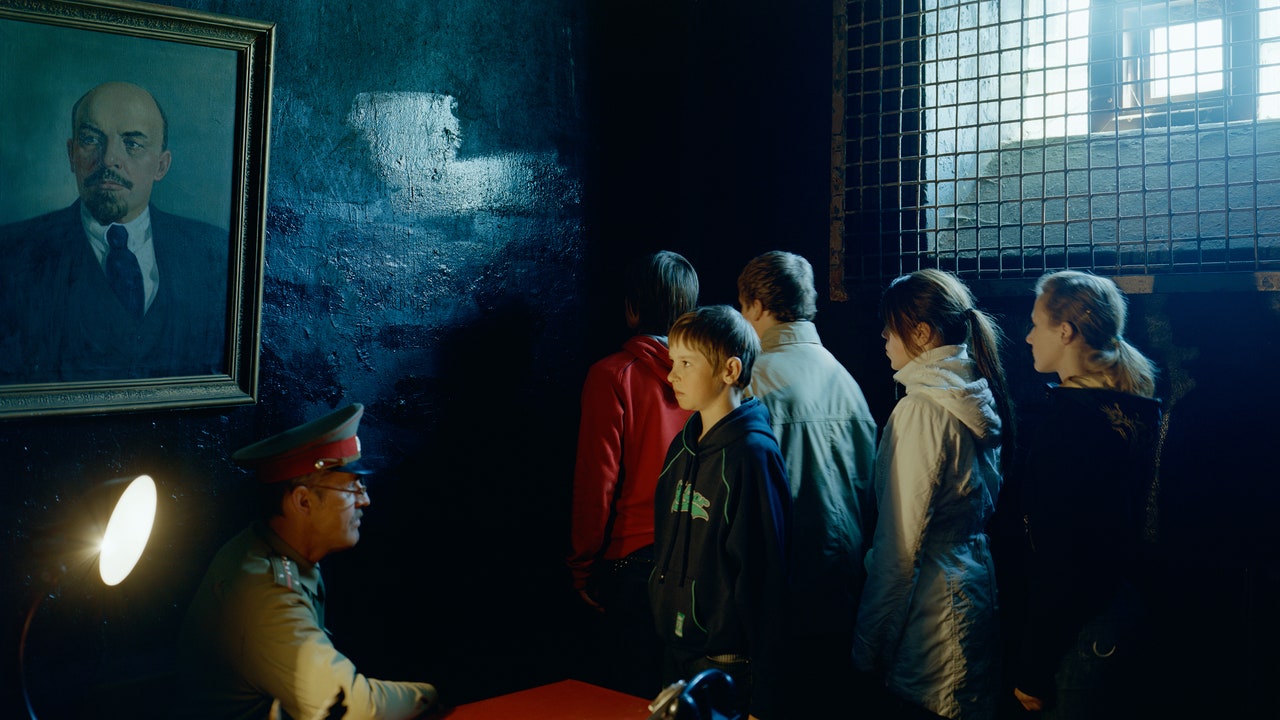
The Allure of Dark Tourism – The New Yorker
The Allure of Dark Tourism
The French photographer Ambroise Tézenas travelled the world to document sightseers at Auschwitz, Chernobyl, and other disaster sites.
via The New Yorker: https://www.newyorker.com/culture/photo-booth/the-allure-of-dark-tourism
The French photographer Ambroise Tézenas was travelling in Sri Lanka when the 2004 Indian Ocean tsunami struck, killing more than thirty thousand people on the island within minutes. Four years later, he came across a newspaper article explaining that a train from the disaster, still sitting where the waves had deposited it in the Sri Lankan jungle, had become a tourist attraction. Tézenas was perplexed that anyone could casually visit the remnants of the horror that he had witnessed first-hand. From this disconnect, he found inspiration: he travelled around the world to sites of historic calamity—from Rwanda and Auschwitz to Chernobyl and Dealey Plaza—to document their afterlives as destinations of so-called “dark tourism.”
-
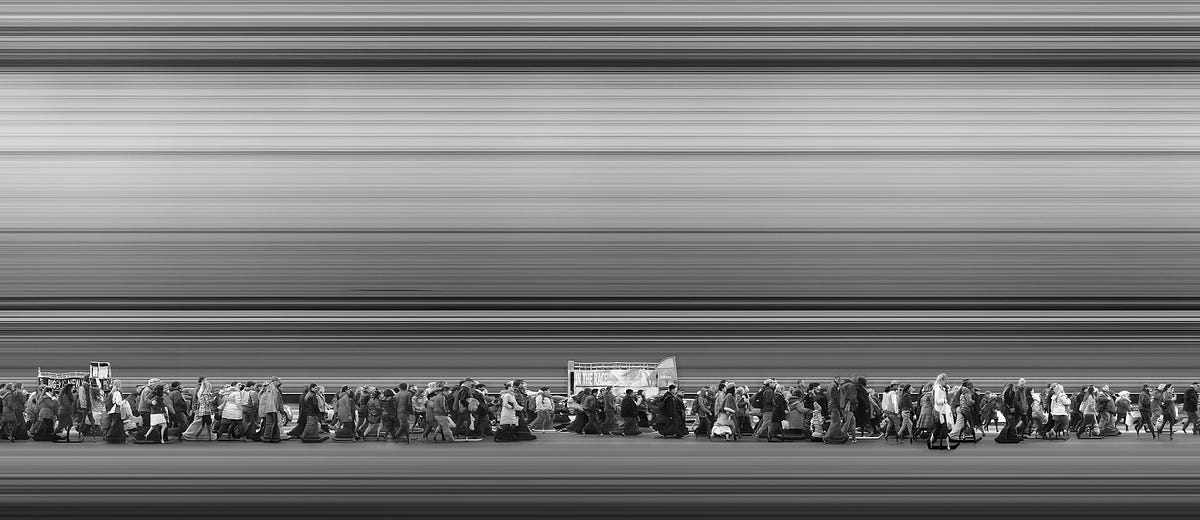
Your Commute Is Beautiful, and Adam Magyar Can Prove It — Vantage — Medium
Your Commute Is Beautiful, and Adam Magyar Can Prove It
Techno-inspired portraits from our invisible moments.
via Medium: https://medium.com/vantage/your-commute-is-beautiful-and-adam-magyar-can-prove-it-44bbc5b235ab
Maybe that’s why Adam Magyar’s work is so impactful. Using eye-grabbing photographic techniques, he stretches the fleeting moments spent in these interstitial spaces into sprawling, meditative strips of film and video. Even though waiting for the train can feel like an eternity, making it look like one is difficult. It actually allows us to contemplate a place many of us endure on our way to more interesting things.
-
Les Boutographies 2015 : Laurence Rasti, There are no homosexuals in Iran The 2015 Jury Prize – The Eye of Photography
Hundreds of Iranian homosexual refugees transit by Denizli, a small Turkish town, where they put their lives on hold while waiting to find a country where they can freely live their sexuality. In this context of uncertainty, where anonymity is the best protection, this work questions the fragile notion of identity and gender. It tries to give back to these people an image that their country has momentarily stolen.
-
Germany: Service by Platon at Jablonka Galerie – The Eye of Photography
“Service” took many weeks to develop but Platon’s enthusiasm for the project never faltered. He rose to each photographic challenge, no matter what difficulties a shoot presented. Like a house being built, stone by stone, the photographs were crafted into a sequence of spreads that in the end added up to an exceptional essay. Access was difficult, shoot times often limited, and making each spread unique instead of repetitive was a great challenge. In addition to portraiture for which Platon is well known, he took documentary images, and even some still-lives. In the end the New Yorker published a series 16 pages and won a National Magazine Award for it. Bravo Platon!
-
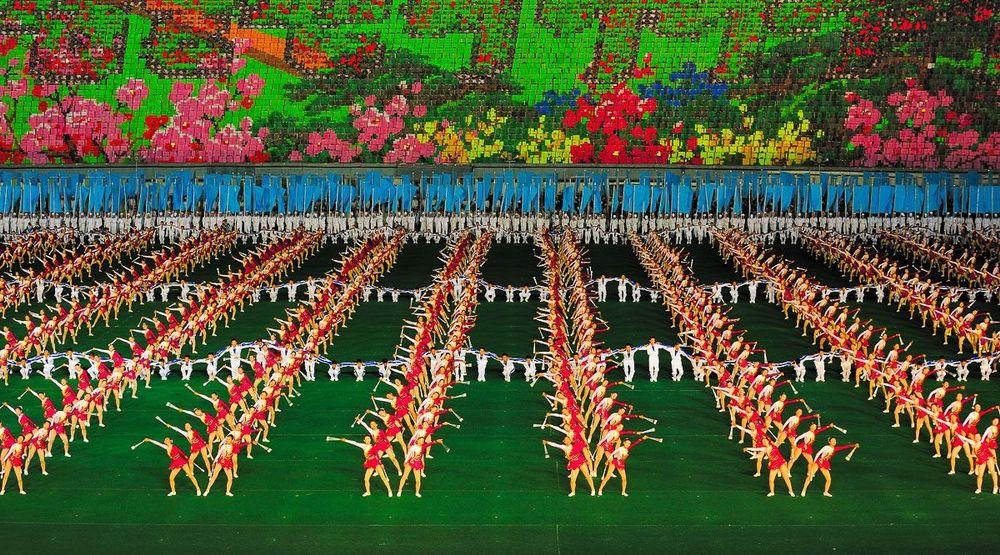
David De Vleeschauwer – Searching for a Human Side in North Korea | LensCulture
Searching for a Human Side in North Korea – Photographs by David De Vleeschauwer | LensCulture
A portrait of “the Hermit Kingdom”—a photographic effort to pierce the veil of mutual misunderstanding and find something human beneath the grandiose propaganda and widespread misinformation
via LensCulture: https://www.lensculture.com/articles/david-de-vleeschauwer-searching-for-a-human-side-in-north-korea
Lost in this sea of misunderstanding are, of course, the people of the country itself. Belgian travel photographer David de Vleeschauwer decided to visit the country with “an open mind and the belief that something human lies behind…despite negative reporting in the West.”

